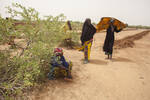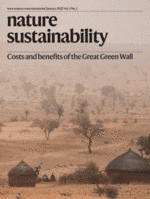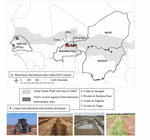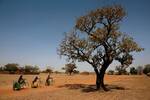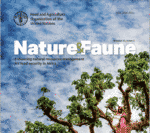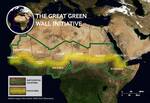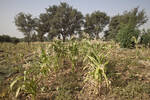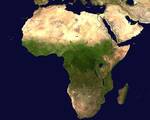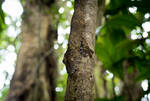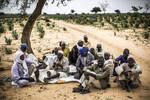Sacande, M., Muir, G.
Restoration Ecology (2022). https://doi.org/10.1111/rec.13656
This strategic issues article presents an evidence of successful large scale restoration interventions combining traditional knowledge and scientific native plant expertise, to reap effective socio‐economic benefits, improved nutrition and livelihoods of rural communities in the Sahel. Socio‐economic and biophysical data collected from Niger, Nigeria and Senegal show not only ecological benefits in land restoration, but also improvements in livelihoods and health, which are critical factors underpinning restoration success. Communities recognise a significant decrease in perceived food insecurity in 2020 compared to the baseline observations of 2016, as well as increased income generated from grass fodder species planted in restoration plots. Over a 5-year period, the restoration interventions in support of Africa's Great Green Wall reached out to over 90,000 village households who contributed to planting and rehabilitating 56,000 ha of degraded lands.
Mirzabaev, A., Sacande, M., Motlagh, F., Shyrokaya, A., Martucci, A.
Nature Sustainability 5, 17–25 (2022). https://doi.org/10.1038/s41893-021-00801-8
The assessment of economic costs and benefits of land restoration under Africa’s Great Green Wall programme shows that every US dollar invested into land restoration yields on average USD 1.2 under the base scenario, with outcomes ranging between USD 1.1 and 4.4. At most, ten years are needed for land restoration activities to break even from the social perspective, accounting for both market-priced and non-market ecosystem benefits. The study highlights activities and locations where land restoration is both economically attractive and ecologically sustainable, even after accounting for lower survival rates of planted trees, shrubs and grasses, persistence of land degradation drivers and the growing number of violent conflicts hindering land restoration in the Sahel. This assessment helps improve the targeting of future land restoration activities in the Sahel.
Sacande, M., Martucci, A., Vollrath, A.
Remote Sensing 13, 3767 (2021). https://doi.org/10.3390/rs13183767
In this work, we demonstrate that restoration interventions in arid to semi-arid landscapes can be independently assessed by remote sensing methods throughout all phases. This innovative and standardised monitoring method provides an objective and timely assessment of restoration interventions and will likely appeal more actors to confidently invest in restoration as a part of zero-net climate mitigation.
Sacande, M., Parfondry, M., Cicatiello, C., Scarascia-Mugnozza, G., Garba, A., Olorunfemi, P. S., Diagne, M., Martucci, A.
Journal of rural studies 87, 160-168 (2021). https://doi.org/10.1016/j.jrurstud.2021.09.021
This article presents the socio-economic impacts of large scale land restoration evaluated through households surveys conducted in the intervention areas in Niger, Nigeria, and Senegal. Results revealed significant improvements in the socio-economic situation of populations in the AAD intervention areas. In five years of restoration (between 2016 and 2020), household income improved in all three countries. In addition, perceived food insecurity significantly decreased, as measured through the Food Insecurity Experience Scale (FIES).
Vähänen, T., Sacande, M.
SDG Knowledge Hub, IISD (2021).
Restoring degraded land and slowing the pace of desertification is vital for the achievement of the SDGs, climate action, as well as contributing to land degradation neutrality and the UN Decade on Ecosystem Restoration. As we embark on global green recovery from COVID-19, large scale restoration will also continue to contribute to economic growth and employment, with broader socioeconomic benefits for and with communities at the centre.
Castro-Salazar, R., Sacande, M., Maniatis, D., Mollicone, D.
Georgetown Journal of International Affairs (2020).
It may come as a surprise to many readers, but since 2005, Lake Chad has stopped shrinking and has actually stabilized in the last two decades, reaching more than 13,000 square kilometers today. Many villages across Lake Chad region have been abandoned or destroyed due to long conflicts. Unsurprisingly, nature has claimed its course, evidenced by discernible vegetation recovery in abandoned villages within just a few years. The Great Green Wall is an opportunity for ecosystem restoration to a productive condition in the Lake Chad region, and will lay the foundations for resilient livelihoods and stable peacebuilding.
Sacande, M., Parfondry, M., Martucci, A.
Nature & Faune Vol. 33, Issue 1 (2020)
FAO’s Action Against Desertification (AAD) was conceived by an understanding that development challenges are interlinked and require integrated solutions. In support of the implementation of Africa’s Great Green Wall Initiative (GGWI), the project addresses the three pillars of sustainable development – environmental protection, economic viability, and social equity.
Sacande, M., Berrahmouni, N.
SERNews, Vol. 34 Issue 3 (2020).
FAO’s restoration approach for the Great Green Wall implementation includes a combination of plant science and restoration practices using a large number of species including trees, shrubs, and grasses that match the restoration needs of the communities and improve biodiversity conservation. Senegal has become a living example showcasing successes achieved in combining land restoration, wildlife conservation and sustainable development efforts.
Fofana, B., Sacande, M., Blagna, F., Dibloni, T. O., Compaore, E., Sanon, K. B., Maiga, Y., Ouattara, A.
International Journal of Biological and Chemical Sciences Vol. 14 No.1 (2020). https://doi.org/10.4314/ijbcs.v14i1.10
This study presents how to rehabilitate degraded lands of the sahelian zone of Burkina Faso by using the rhizobia and mycorrhizal symbiosis through inoculation techniques. The results show that inoculations improve the growth and survival rate of Vachellia seyal (or Acacia seyal) seedlings in restoration plots. Double inoculations are more effective than the single ones. We recommend inoculating seedlings for a better success of restoration plantings in the Sahel.
Bastin, J.-F., Finegold, Y., Garcia, C., Mollicone, D., Rezende, M., Routh, D., Zohner, C., M., Crowther, T.W.
Science 365, 76-79 (2019). https://doi.org/10.1126/science.aax0848
The restoration of trees remains among the most effective strategies for climate change mitigation. We mapped the global potential tree coverage to show that 4.4 billion hectares of canopy cover could exist under the current climate. This highlights global tree restoration as one of the most effective carbon drawdown solutions to date. Our results highlight the opportunity of climate change mitigation through global tree restoration but also the urgent need for action.
Sacande, M., Berrahmouni, N.
Nature & Faune Vol. 32, Issue 1 (2018)
FAO's approach to large-scale restoration is seen as a transformative model for rural community development, hand in hand with the transformation of the landscapes they live in. The methodology and lessons learned from its application can lead the way for implementation of the new commitment African Forest Landscape Restoration Initiative (AFR100) in particular in the restoration of degraded lands difficult to regenerate naturally because of the loss of seed banks.
Bastin, J.-F., Berrahmouni, N., Grainger, A., et. al
Science 356, 635-638 (2017). https://doi.org/10.1126/science.aam6527
Dryland biomes cover two-fifths of Earth’s land surface, but their forest area is poorly known. Here, we report an estimate of global forest extent in dryland biomes, based on analyzing more than 210,000 0.5-hectare sample plots through a photo-interpretation approach using large databases of satellite imagery at very high spatial resolution and very high temporal resolution, which are available through the Google Earth platform. We show that in 2015, 1327 million hectares of drylands had more than 10% tree-cover, and 1079 million hectares comprised forest.
Sacande, M., Berrahmouni, N.
Restoration Ecology 24, 479-488 (2016). https://doi.org/10.1111/rec.12337
Combining community needs and preferences with dryland plant expertise in order to select suitable native species for large-scale natural capital restoration is the approach that has been successful in the Sahel as part of Africa’s Great Green Wall programme. Results of 3 year interventions (from 2013 to 2015) in four cross-border regions of Mali, Burkina Faso, and Niger, all located in dryland ecosystems of the Sahel are presented, after planting 55 woody and herbaceous species to initiate restoration of 2,235 ha of degraded land.
Sacande, M., Berrahmouni, N., Hargreaves, S.
Unasylva 245, Vol. 66 (2015).
The intrinsic and complex links between people and the landscape in which they live is of critical importance when developing a restoration model. FAO’s Unasylva 245, highlights forest and landscape restoration as a special issue ahead of the Paris Climate Conference of December 2015. It presents transborder restoration activities of Great Green Wall in Burkina Faso, Mali and Niger, where 110 communities have used over one million seedlings of 50 native species to restore over 1000 hectares of land benefitting some 50 000 people.


